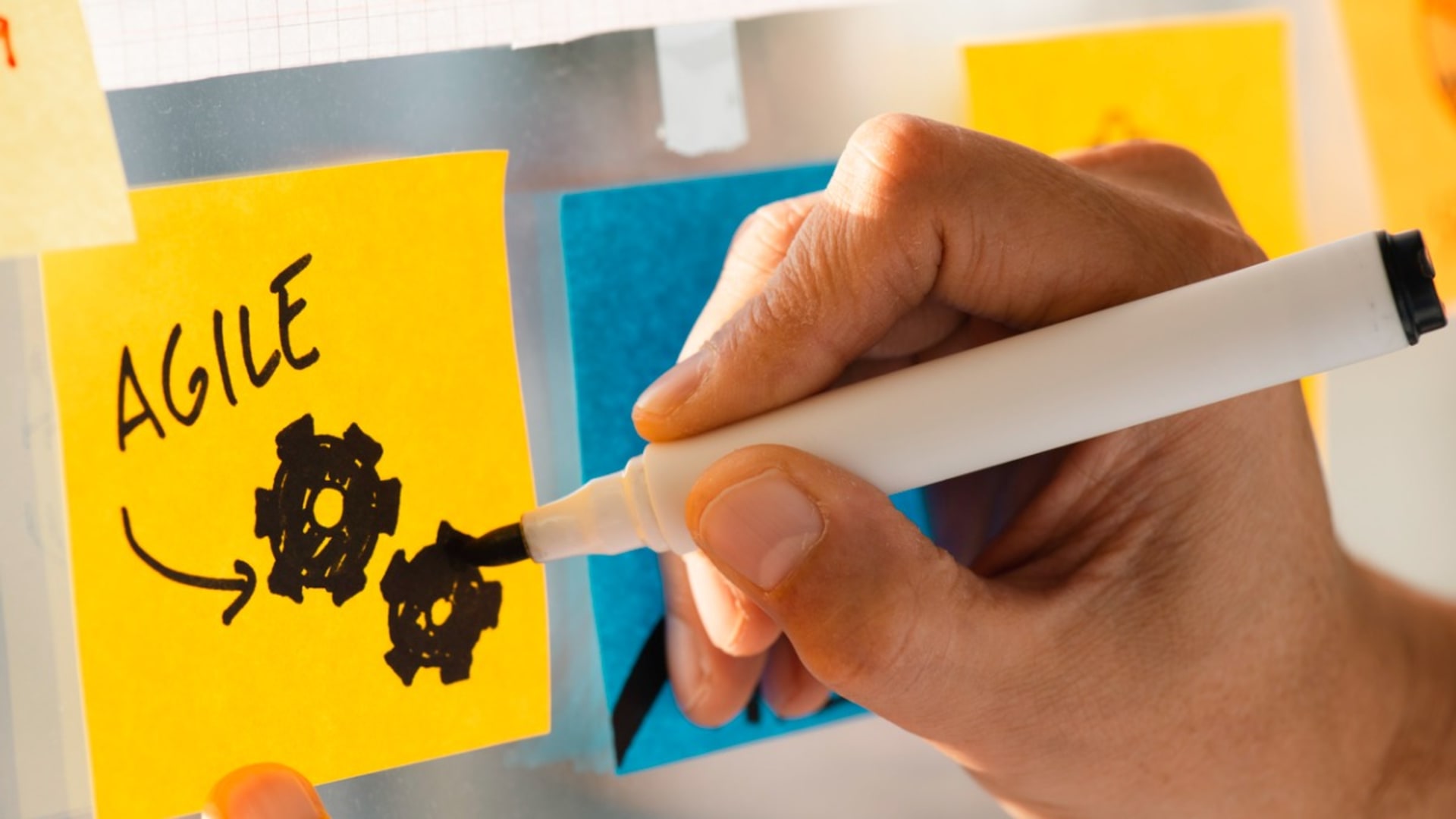- Home
- Solutions
- Manual Testing
- Hire Manual Testers
Hire Manual Testers
Our top 1% of LATAM tech talent has already been vetted. Get bilingual, nearshore Manual developers on your team in 2 weeks.
500+ companies rely on our top 1% tech talent.
No time to find the top talent yourself? Skip the recruitment.




The Manual Tester Hiring Guide
User expectations are high. Delivering a perfect experience requires attention to detail and expertise beyond the basics. But finding testers who bring technical skills and a quality-first mindset can be tough. With access to the top 1% of LATAM tech talent in 100+ industries, we’ve refined the process of finding professionals who turn good software into great products.
This guide will show you everything you need to know to hire manual testers (also known as QA engineers) that fit your needs. You’ll learn how to navigate the hiring process, prioritize the most important skills and build a team that delivers.
Before You Start Hiring
Project or Team Requirements
Before you hire manual testers, start by defining your projects and the type of testing team you need. Are you looking for testers to work on short term deliverables or do you need a team to embed within your company for ongoing quality assurance? Clarify these details so you can hire QA engineers with the right technical depth and collaboration skills.
Timeline and Budget
Set your project’s timeline and budget before you hire. Knowing your deadlines will help you find testers that can start right away. Knowing your budget will help you focus on the best value for money. A clear plan will keep your hiring process smooth and in sync with your project.
Niche experience in Web Development
Manual testers with experience in your tech stack or web framework are gold. Whether your project requires JavaScript heavy applications or ecommerce platforms experience, niche expertise means faster onboarding and better performance testing.
Team Player
Testing isn’t a solo activity—it’s a team sport. Look for professionals who are great communicators, open to feedback and thrive in team environments. A tester that’s a team player will fit in with your current developers, project managers and stakeholders.
Industry Experience
Manual testers with industry experience bring a special advantage to the software testing process. They know the standards, challenges and user expectations of your industry. This industry knowledge means they can spot the critical issues and tailor their approach to your industry’s needs.
17 Skills Every Manual Tester Should Have
The right skills help testers see the invisible, validate the complex and deliver the perfect product. These skills are the foundation of a solid test strategy that matches modern development.
When testers combine technical skills with the right soft skills the impact goes beyond bug finding. They improve team collaboration, optimize development and deliver products that exceed user expectations. A good manual tester will make your product work flawlessly – on time and on budget.
Here are 17 skills to look for when you hire QA testers.
Technical Skills to look for in your ideal manual tester
1. Test Case Design
Manual testing starts with effective test case design. Testers need to map out every possible user interaction to find the issues before they surface. Well-designed testing strategies will help your project avoid the hidden bugs that affect functionality or user experience.
2. Bug Tracking and Reporting
Tracking and reporting bugs is just as important as finding them. Testers should document issues clearly, with detail and steps to reproduce. This will save your developers time and reduce rework.
3. Exploratory Testing
Good testers can intuitively explore your software and simulate how real users will behave. This will uncover edge case issues that your scripted scenarios will miss and make your software more robust in real world scenarios.
4. Functional Testing
Testing the core features to make sure they work as expected is non-negotiable. Whether it’s login processes or checkout systems, functional testing checks that the critical parts of your application work flawlessly.
5. Regression Testing
Every update brings the risk of breaking your product. Regression testing checks the new changes don’t break existing features. This reduces downtime and user frustration.
6. Mobile and Cross-Browser Testing
In a multi device, multi browser world your software must work across platforms. A software tester with this skill will maintain consistency across devices, browsers and screen sizes to deliver a perfect product.
7. Agile Processes
QA engineers familiar with Agile can adapt to changing requirements, communicate with developers and keep up with tight sprint cycles. This will keep the project on track.
8. Testing Tools
Manual testers use tools like Jira, TestRail or Mantis for test management and bug reporting. These tools will help testers stay organized, prioritize issues and have transparency between development and QA teams.
9. Domain Knowledge
Hire manual testers who know your industry and can test your software with real use cases in mind. Whether it’s compliance in finance or patient data security in healthcare, domain knowledge will help your software meet industry standards and customer expectations.
10. API Testing
API testing checks that your backend integrations work well. Testers should know how to use tools like Postman or SoapUI to test requests, responses and data integrity. This will reduce the risk of bugs in connected systems.
11. SQL and Database Testing
Manual testers should have basic knowledge of SQL to validate data consistency and integrity. This is important in applications where data processing and storage is key, like e-commerce or SaaS platforms.
12. Test Data Management
Creating, maintaining and using test data is a key skill. Testers must simulate different user scenarios and edge cases. Good test data management will give you realistic test conditions and reduce the chance of unexpected bugs.
13. Security
Security testing includes finding vulnerabilities like broken authentication or insufficient encryption. Tools like Burp Suite or OWASP ZAP can help, but being able to manually test security loopholes adds an extra layer of protection, especially in industries like finance or healthcare.
Soft Skills to Look for in Your Ideal Manual Tester
14. Communication Skills
Communication between technical and non technical teams. Testers must be able to report bugs, impact and solution to the team so the team can resolve quickly.
15. Problem Solving
Testers will face unexpected issues that require a structured approach to find and fix problems. This is important for complex systems like JavaScript execution or debugging cross browser compatibility issues in rendering.
16. Critical Thinking
Critical thinking is important in analyzing software behavior, finding edge cases and questioning assumptions. For example, in exploratory or security testing critical thinking will help you find vulnerabilities by mimicking unusual user behavior.
17. Attention to Detail
In manual system testing, the smallest mistake can cause big problems for end users. A manual QA tester must observe details to catch small inconsistencies like formatting errors or incorrect data.
14 Questions to Ask Your Ideal Manual Tester
When interviewing manual testers, you want to ask questions that first test their technical skills and knowledge. Employers will also usually give a coding test to further test their on-the-job knowledge.
The following questions will test not only the testers technical knowledge but also their problem solving skills, teamwork, communication skills and adaptability – all important traits in a team environment.
Here are a few examples of technical questions:
1. How would you test a login page?
I would start by identifying test scenarios, positive cases (valid username and password) and negative cases (invalid username/password combinations). Then, I would create test steps to cover all possible inputs (empty fields, special characters, max character limits). I would also test edge cases (SQL injection attempts) to make sure the login page is secure and robust.
2. How do you do exploratory testing?
I would start exploratory testing by reviewing the application to understand its core functionality and user flows. Then, I would create a mental map of potential edge cases and unusual user behavior to explore. For example, I would deliberately break workflows by entering unexpected inputs or skipping steps. I would find hidden issues that structured test cases might miss.
3. How do you do cross browser testing?
I would start by identifying the browsers and devices most used by the target audience. Then, I would test critical functionality like forms, navigation and responsiveness on these platforms. For example I would use browser tools or virtual environments to simulate real world conditions and check for rendering, layout or performance issues.
4. How do you test APIs without automation tools?
I would send HTTP requests using tools like Postman or curl to test the API responses. I would check for status codes, response times and data accuracy and then compare the results with the API documentation. For example, I would verify that a GET request to retrieve user data returns the correct JSON format and matches the database records.
5. How do you get sufficient test coverage for a big application?
To get sufficient test coverage for a big application I would start by analyzing the test requirements and break them down into functional areas. Then I would map test cases to these areas, positive, negative and edge cases. I would use requirement traceability matrices to make sure every feature is tested. This way I would create a testing strategy that covers the application functionality.
6. How do you test for localization and internationalization issues?
I would check content, formatting and functionality in different languages and regions to test for localization and internationalization issues. I would check elements like date formats, currency symbols and text alignment to make sure they meet regional standards. I would also create test scenarios to find text truncation, encoding issues or cultural mismatches.
7. How do you check data consistency between front end and database?
I validate data consistency by testing inputs through the front end and querying the database to compare the results. For example, I would enter user details in a form and then check the database to see if the correct information was retrieved and stored correctly.
8. How does usability testing fit into manual testing and how is it done?
I do usability testing to see if the application is user-friendly by observing real users using the system. I create scenarios that mimic everyday user tasks to find areas of friction or confusion. During test case execution, I focus on layout, navigation and overall user experience to make sure the product meets user expectations.
9. Manual QA testing and automation testing?
Manual QA is for exploratory testing, usability testing and scenarios that require human judgment like user experience or edge cases. Automation is for repetitive high-volume tasks like regression testing or performance testing where speed and consistency is key. Combining both gives you a balanced approach that improves quality, speeds up delivery and meets technical requirements and user expectations at every stage of the software development life cycle.
10. Can you give an example of a critical issue you found during testing?
This question tests the candidate’s problem solving skills and attention to detail. It shows their analytical skills and how they prioritize under pressure.
11. How do you work with developers to fix complex bugs?
This questions tests the candidate’s teamwork and communication skills. It shows how they build rapport with technical teams and work together.
12. What was the toughest project you worked on and how did you handle it?
This question tests the candidate’s flexibility and determination. It shows how they approach challenges, manage stress and deliver results.
13. How do you change your testing approach for a new or unknown technology?
This question tests the candidate’s willingness to learn and adapt. It shows their technical flexibility and how they handle learning curves in fast-paced environments.
14. How do you keep your testing quality when working under pressure?
This question tests the candidate’s time management and organizational skills. It asks them to balance thoroughness with efficiency and high standards.
Frequently Asked Questions
Are manual testers still needed in today’s automated testing world?
Yes, manual testers are still required for exploratory testing, user experience validation and scenarios where automated tools lack context or flexibility.
How do I test a manual tester’s technical skills during the interview process?
Test technical skills through practical tests like designing test cases or doing API testing. Combine with technical questions that go deep into the candidate’s skills.
How do I write a manual tester job description?
A job description for manual testing engineers should include the technical skills required like test case design and API testing and soft skills like problem solving and critical thinking. Mention your industry, project scope and the software methodologies you prefer to use.
How long does it take to onboard a manual tester?
The onboarding time varies but is faster if the tester has experience in your industry or uses familiar tools. Use clear documentation and defined processes to minimize this time.
Which industries need manual testing?
Manual testing is required in industries with high user interaction or regulatory requirements like ecommerce, healthcare and finance because it helps applications meet functional and compliance standards.
How do I find the right cultural fit when hiring manual testers?
Test cultural fit through interviews that ask about communication styles, adaptability and collaboration experience. You can make everyone work together by setting goals and processes.
What’s the right balance between manual and automation?
It depends on the project. Automation is good for repetitive tasks but manual is required for usability, edge cases, UX and anything that requires human decision.

- Hire Manual Testers
How Businesses Can Overcome the Software Development Shortage
BairesDev Ranked as one of the Fastest-Growing Companies in the US by Inc. 5000









